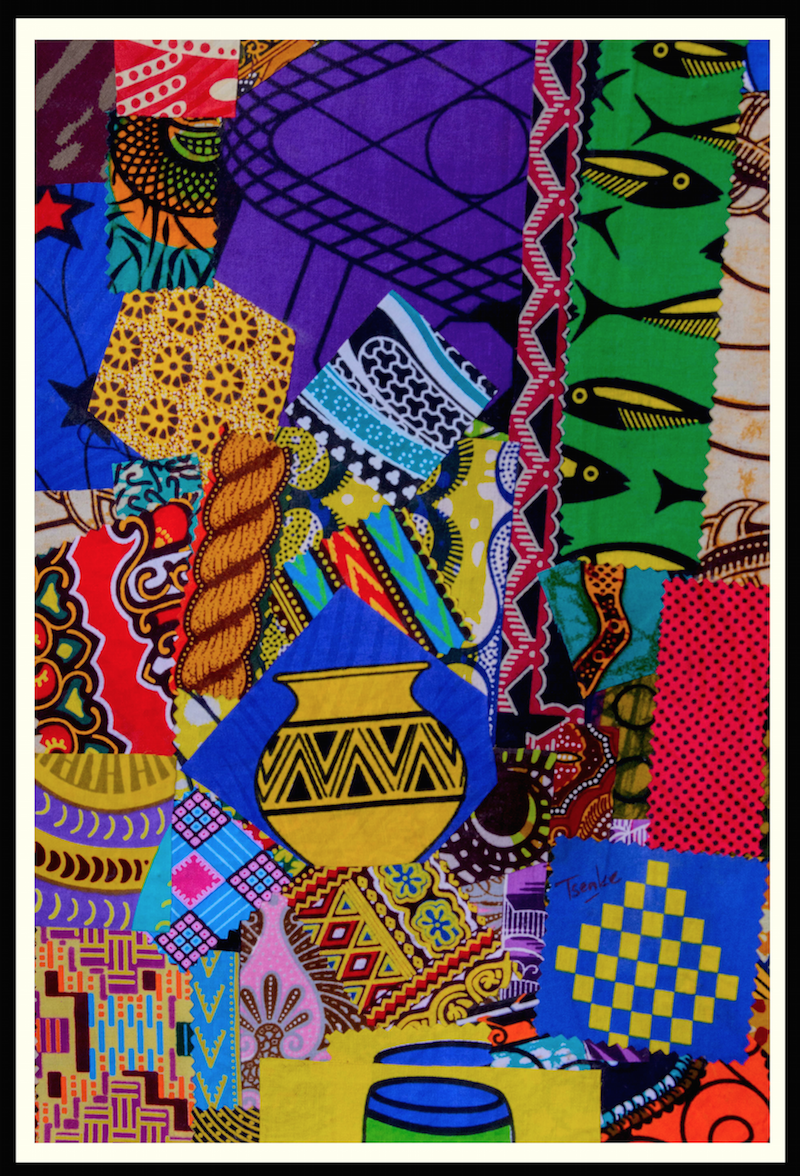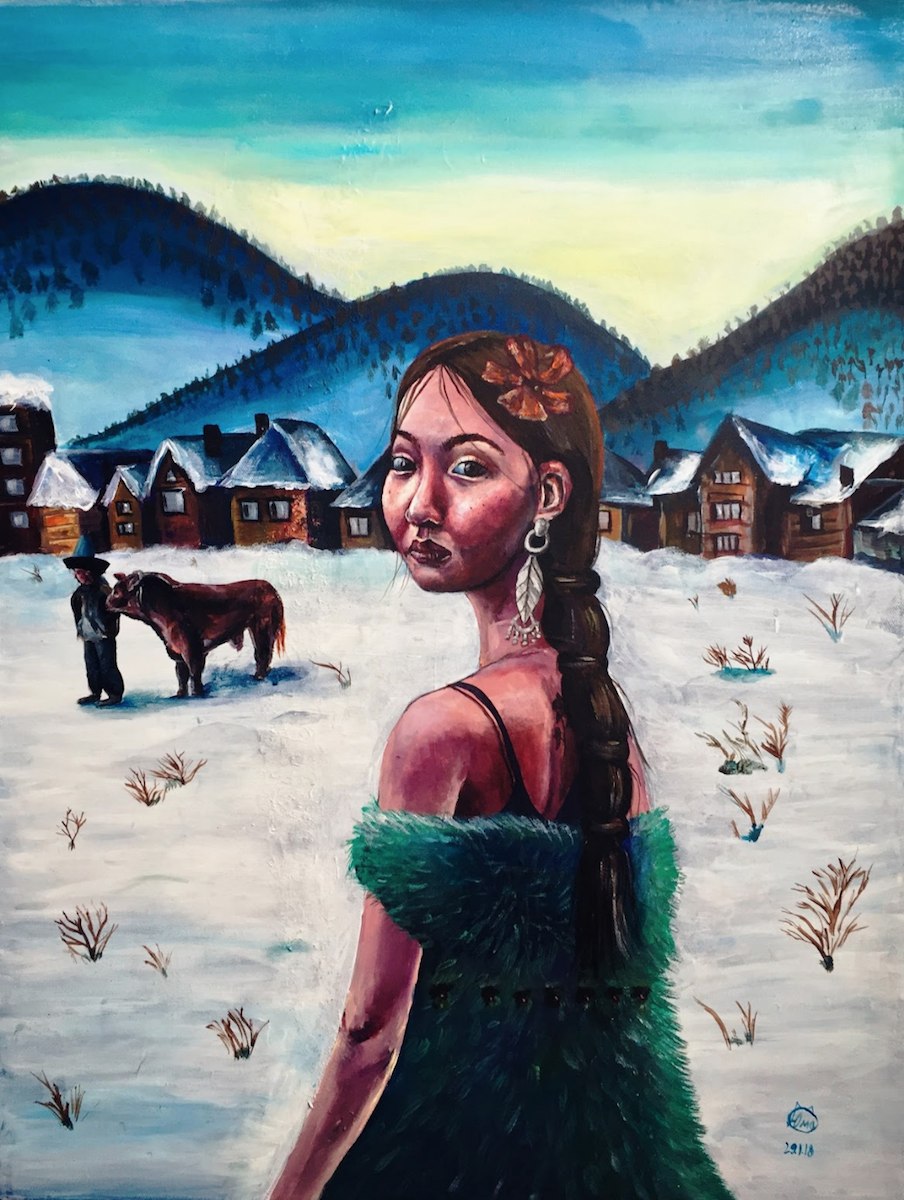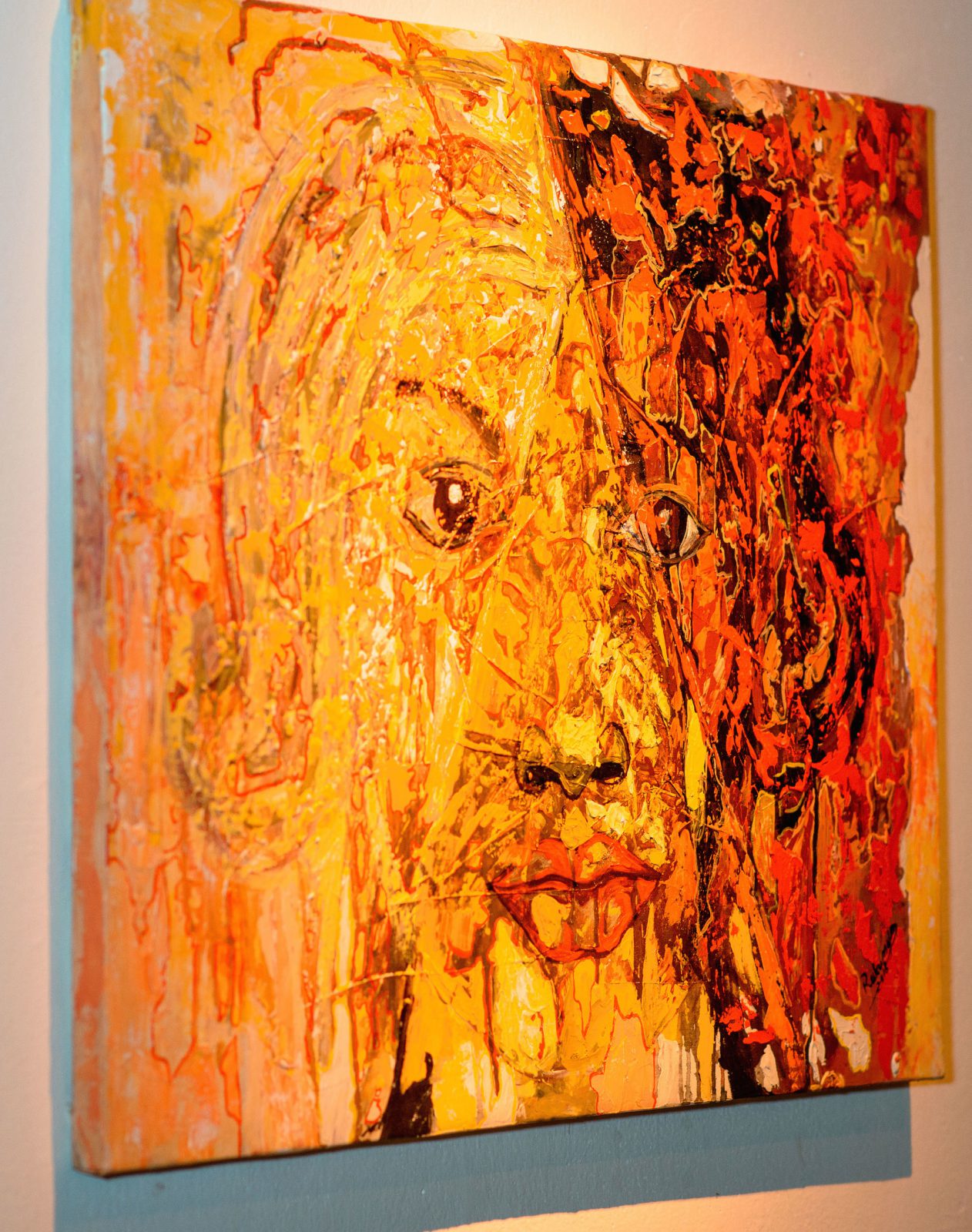Last Image Show
An international young artists exhibition exploring the theme of 'Silence'
Curated by Gadi Ramadhani in collaboration with Emergent Art Space,
the Last Image Show has brought together, from 21 countries, the works of 33 artists
reflecting on varied and diverse experiences of 'silence' and sharing them through their art,
in a cross cultural dialogue that has both highlighted stories we have in common
and opened our eyes to new and unexpected ones.
The Last Image Show was a live exhibition in Dar es Salaam, Tanzania, in September 2018.
This is the online version of that exhibition.
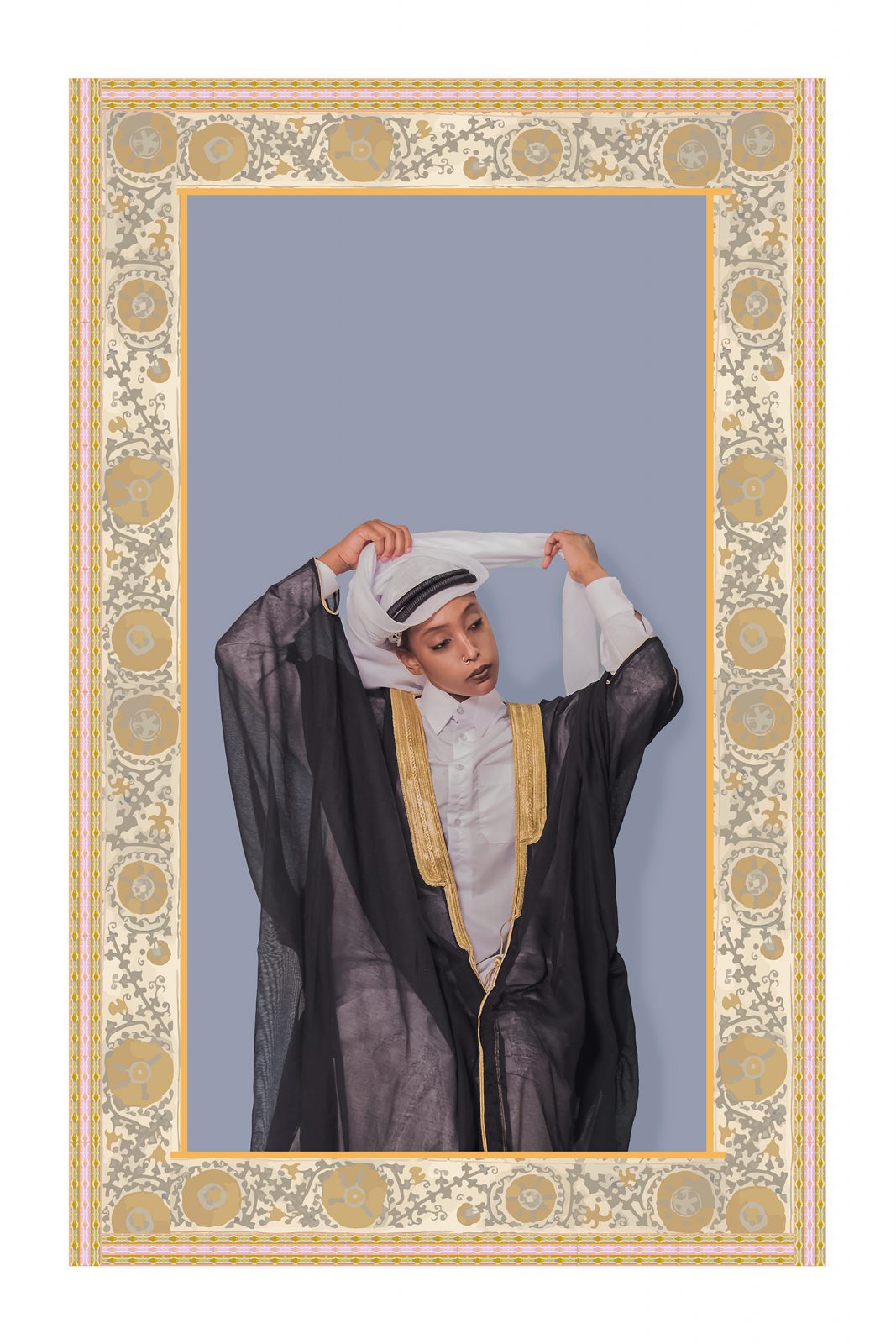
Sheikh Aisha Grooming Herself 2
Digital collage
Doha, Qatar
More info
The crisis between the Gulf Cooperation Council (GCC) came to the public’s eye in the summer of 2017 and has continued into 2018. Taken from Al Jazeera news: “The GCC rift followed US President Donald Trump's visit to Saudi Arabia in May, where he met leaders of the Arab world. The night before Trump's visit, the former US defense secretary, Robert Gates, offered a scathing assault on Qatar, criticizing its support for "Islamists". Starting with three members of the GCC, Bahrain, UAE and Saudi Arabia, abruptly cutting off diplomatic relations with Qatar, now 13 countries have cut or severed relations with Qatar. Over 89 diplomatic missions are still open and operate in Qatar, and 34 countries maintain their diplomatic relations. The blockade has disrupted business, education and transport links among Qatar and its neighbors. It has resulted in the separation of families whose members hold different passports. Additionally, communication outlets are banned, gag orders have been put in place, and international traveling has become more expensive along with Qatar citizens and residents’ every day needs.
The GCC, once in cooperation with each other and governed by Islam, which promotes peace and understanding, no longer works in total unison. In wanting to provoke thought, this exploration visualizes an alternate reality where the Sheikh, or King, is a woman. Under an idealized female leadership there’s portrayed a unified GCC region.

Untitled (Reflection)
Digital collage
Doha, Qatar
More info
The crisis between the Gulf Cooperation Council (GCC) came to the public’s eye in the summer of 2017 and has continued into 2018. Taken from Al Jazeera news: “The GCC rift followed US President Donald Trump's visit to Saudi Arabia in May, where he met leaders of the Arab world. The night before Trump's visit, the former US defense secretary, Robert Gates, offered a scathing assault on Qatar, criticizing its support for "Islamists". Starting with three members of the GCC, Bahrain, UAE and Saudi Arabia, abruptly cutting off diplomatic relations with Qatar, now 13 countries have cut or severed relations with Qatar. Over 89 diplomatic missions are still open and operate in Qatar, and 34 countries maintain their diplomatic relations. The blockade has disrupted business, education and transport links among Qatar and its neighbors. It has resulted in the separation of families whose members hold different passports. Additionally, communication outlets are banned, gag orders have been put in place, and international traveling has become more expensive along with Qatar citizens and residents’ every day needs.
The GCC, once in cooperation with each other and governed by Islam, which promotes peace and understanding, no longer works in total unison. In wanting to provoke thought, this exploration visualizes an alternate reality where the Sheikh, or King, is a woman. Under an idealized female leadership there’s portrayed a unified GCC region.

Gulf Cooperation Council
Digital collage
Doha, Qatar
More info
The crisis between the Gulf Cooperation Council (GCC) came to the public’s eye in the summer of 2017 and has continued into 2018. Taken from Al Jazeera news: “The GCC rift followed US President Donald Trump's visit to Saudi Arabia in May, where he met leaders of the Arab world. The night before Trump's visit, the former US defense secretary, Robert Gates, offered a scathing assault on Qatar, criticizing its support for "Islamists". Starting with three members of the GCC, Bahrain, UAE and Saudi Arabia, abruptly cutting off diplomatic relations with Qatar, now 13 countries have cut or severed relations with Qatar. Over 89 diplomatic missions are still open and operate in Qatar, and 34 countries maintain their diplomatic relations. The blockade has disrupted business, education and transport links among Qatar and its neighbors. It has resulted in the separation of families whose members hold different passports. Additionally, communication outlets are banned, gag orders have been put in place, and international traveling has become more expensive along with Qatar citizens and residents’ every day needs.
The GCC, once in cooperation with each other and governed by Islam, which promotes peace and understanding, no longer works in total unison. In wanting to provoke thought, this exploration visualizes an alternate reality where the Sheikh, or King, is a woman. Under an idealized female leadership there’s portrayed a unified GCC region.
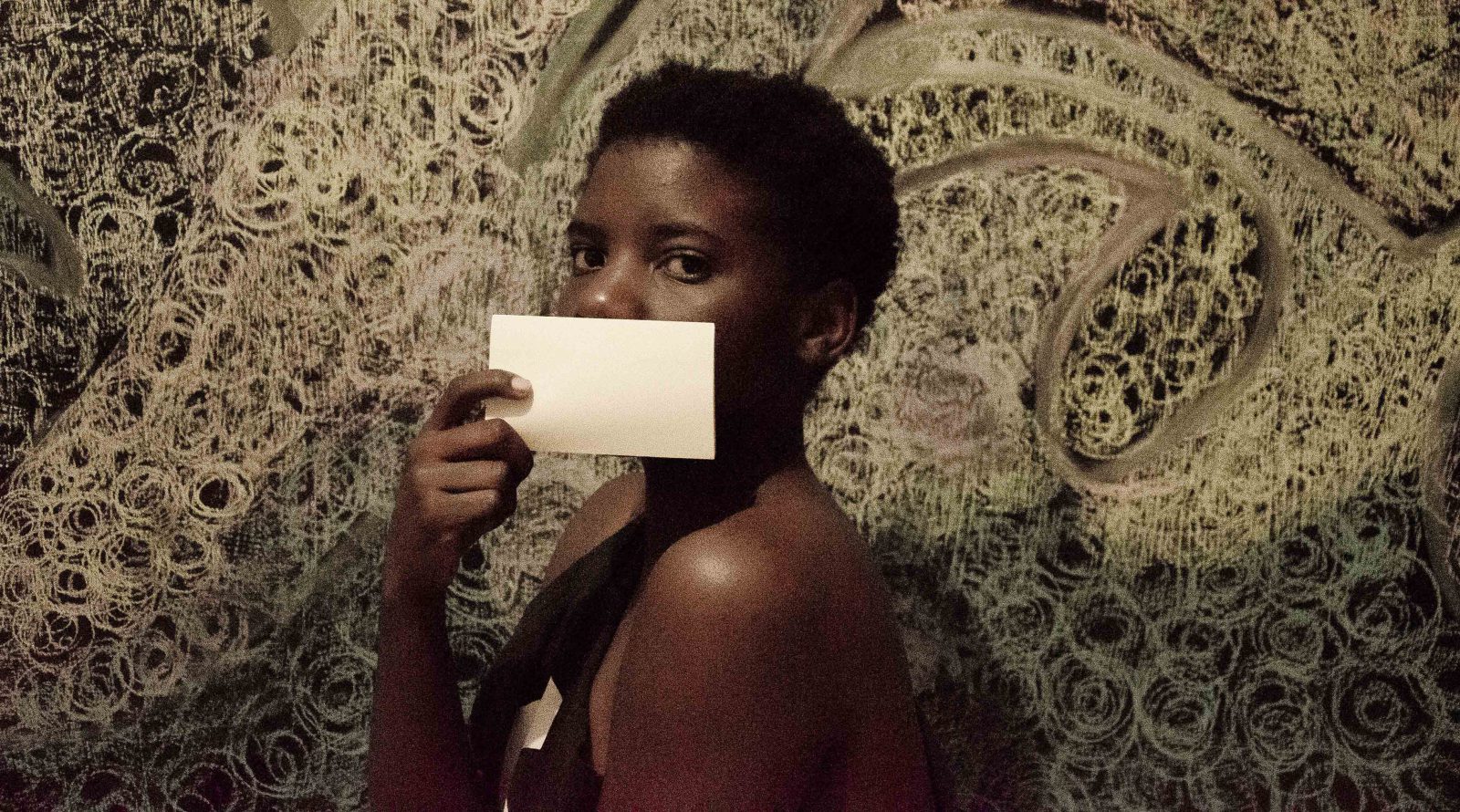
Silence
Phototgrapy
Nairobi, Kenya
More info
An image depicting the face of silence. Expressionless, faceless, yet present.
A self portrait born out of a personal struggle with sound, communication and the importance of silence.
An an image depicting the process of growth and questioning, the path being revealed and the presence of time and the depth of silence.
This image was part of the "Last image show" exhibition; a collaboration between Emergent Art Space and Kokoten Studio, TZ.
An an image depicting the process of growth and questioning, the path being revealed and the presence of time and the depth of silence.
This image was part of the "Last image show" exhibition; a collaboration between Emergent Art Space and Kokoten Studio, TZ.

Silence in Hellersdorf IV
Photography
Berlin, Germany
More info
Hellersdorf-Marzahn, that Berlin district, where highly organized far-right groups fuse
with ordinary bourgeois racists,
where so called concerned citizens set up
demonstrations against refugees, and far-right parties organize children’s parties for
everyone - as long as everyone owns the right’s skin-color, gender and orientation.
Situated in the far east of Berlin, it is known for its dull high-rise housing blocks, its
greyness, its social problems and its xenophobia: 354 cases of far-right and
xenophobic activities in 2016 alone - the second highest number in the whole of
Berlin.
In my opinion, Hellersdorf is architectural violence, expression of an insane attempt to
squeeze as many people as possible into a limited space, regardless of its social and
individual consequences.
My photos show the loneliness and tristesse which I felt while wandering through this
concrete jungle in autumn 2014. It is the perspective of an outsider.
Silence in Hellersdorf III
Photography
Berlin, Germany
More info
Hellersdorf-Marzahn, that Berlin district, where highly organized far-right groups fuse
with ordinary bourgeois racists,
where so called concerned citizens set up
demonstrations against refugees, and far-right parties organize children’s parties for
everyone - as long as everyone owns the right’s skin-color, gender and orientation.
Situated in the far east of Berlin, it is known for its dull high-rise housing blocks, its
greyness, its social problems and its xenophobia: 354 cases of far-right and
xenophobic activities in 2016 alone - the second highest number in the whole of
Berlin.
In my opinion, Hellersdorf is architectural violence, expression of an insane attempt to
squeeze as many people as possible into a limited space, regardless of its social and
individual consequences.
My photos show the loneliness and tristesse which I felt while wandering through this
concrete jungle in autumn 2014. It is the perspective of an outsider.

Untitled 1, Series: Nómbralas
Injection of ink on cotton paper
CDMX, Mexico
More info
[Nómbralas] is a typology of 12 photographs about austere cafeterias, uncovered on the roadsides of north east Mexico. My interest with this constructions and their peculiar repetitive aesthetic is to conduct to a reading of abandonment in relation to the titles of this establishments, which evokes me the names or nicknames of women that disappear everyday in Mexico. The sociocultural condition of -being woman- and the perception of all things feminine in this country is dangerous: 7 women die every day because of violent reasons of which 95% of the cases go unpunished and unresolved (fgures from the National Institute of Statistics) In states like Chihuahua, the number of women murdered is 15 times higher than the worldwide average and 78 out of every 100 women has denounced some kind of violence (fgures from INEGI) in an age range encompassing 20 to 29 years old. Every day there are silenced women suffering different kinds of a problem that is known as structural gender violence. The normalcy, invisibilization and impunity are the main traits from which this fgures arise and grow. In that sense, this establishments named after these women represent altars but also represents a resignifcation of the graves symbolising the oblivion that dead women acquire and how we interact with those memories and post mortem manifestations within everyday life; however this spaces are isolated precarious and even hopeless, just as the situation in which most of the femicide ends.

Self-portrait
Acrylic paint and kitenge fabric
Dar es Salaam, Tanzania, United Republic Of
More info
I’ve grown up in Dar es Salaam and I spent 6 years in a Muslim school (I am Christian though). This painting is inspired by my experiences- growing up I realized that what was considered appropriate dressing for a woman is to cover up as much skin as possible. The kitenge/kanga covering the face symbolizes the influence of culture not giving women a voice to what they want and in this case wat to wear.
Personally, I don’t think this is fair and I believe that women should have the freedom to wear whatever they want and shouldn’t be shamed for showing their beautiful God given bodies.

Hidentity
Charcoal on canvas
Abuja, Nigeria
More info
You choose who you are on social media, either your identity or Hidentity.

Untitled (Breathing)
Performance
New York, United States
More info
Duration: 8 hours (non-stop)
Photo Credit: Marilyn Arsem

Untitled (Breathing)
Performance
New York, United States
More info
Duration: 8 hours (non-stop)
Photo Credit: Marilyn Arsem

Med-fazen
Ceramics
Ljubljana, Slovenia
More info
The main characteristics of work Mèdfázen are the ambiguity of the form. On the one hand, the sculptures are presently in a safe, isolated area, covered with white fabrics that protect them. The environment is meditative, the time stops and the form has its own time to grow. On the other hand, the same form can be seen as a cage or a trap for a small, fragile and an undeveloped individual. Unable to move freely, limited to space the woolen lines. However, through the composition of the work, the idea of further development after growth is strongly expressed. The work breathes a unique dichotomy between the space of shelter and the space of unlimited freedom. The forms are growing and breaking free. The work really comes to life in front of the viewer through the created tension between these conflicting poles. It seems as if the abstract forms will soon rip out of their limited space and fully live somewhere else, away from the viewer's eyes.
Emergent Art Space expresses its gratitude to the curator Gadi Ramadhani,
to Alliance Française that hosted the live exhibition in Dar es Salaam,
to all the people who helped in many small and big ways to make this event possible,
and to the artists who believed in this experience and shared their art.

















